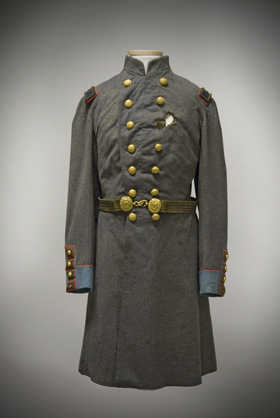by Gwen Spicer
Just the other day I was removing a wonderful silk embroidery from its frame. The embroidery was worked by the owner's great-great-great-great-grandmother in 1818. The embroidery had several wonderful features that make these types of textiles so individual and special.
I have seen a fair number of embroideries and lots of methods of framing, yet I was still hardly prepared for what I found inside this one. The first surprise was that the owner's grandmother had written in pencil on the upper back edge of the frame the name of the person who did the work in 1818. The name of the owner's great x4 grandmother was "Betsy Rosman". This was exciting as the embroidery was not "signed" and no one knew the name of the embroiderer. The owner had speculated that the last framing was done by his grandmother around the 1930's and that is when she wrote the name.
As I said, I've seen many embroideries. Textile conservators often work with family heirlooms such as embroideries or samplers, and so I have also heard many amazing stories that accompany such textiles. Sometimes a great deal is known about a particular piece, and sometimes the piece is nearly a mystery. This particular piece was a bit of both. The owner knew some details, but as the history went back further and further, less was known (remember this piece is nearly 200 years old...that is a lot of history).
Great care was needed to remove the numerous small nails for this particular embroidery. The silk was quite fragile near the acidic materials, and over glue was present for the attachment of the backing paper. The browned corrugated board seen from the back was quite plain and so I was not prepared for the next surprise. Below is the image of what I found on the reverse side of the board, which had been in direct contact with the silk since c. 1930!
 |
| Hidden behind a school girl's embroidery. |
The board that supported this embroidery for so many years had a post mark for 1926. It came from a box that had an earlier purpose, which was to ship 31 pounds of sweaters from New York City up the river to Hudson, New York. Over the years I have seen many reuses of board, but for some reason, this was unexpected. Perhaps it was the extreme nature of it. And upon closer inspection, the board was telling another story, completely apart from the 1818 embroidery. What is interesting is that the box was clearly used to serve a purpose at that time and that purpose was not to be a glimpse into history, as was the purpose of the embroidery.
With help from others, we found that Peckham-Foreman Inc, was a company which made knitted goods. Among their products were swimsuits for men and women, and sweaters for men. I wondered what might these sweaters have looked like in 1926? A quick search indicated that the fashionable "Travelo" sweater was a big seller for this company and might very well have been what was in the box.
This appears to be a popular sweater, or at least we found many advertisements for this sweater. It appears to be a moderately to more expensive priced sweater at around $8.00. Clearly with all of the pockets, this was a more complex sweater to produce. And the wording of the advertising suggests that it is "great for yachting".
"Travelo" an elastic knit jacket, that first appeared on the market in 1914. It was begun being manufactured in NYC in 1918 at the north east corner of Park Avenue and 130th Street.
 |
| The Travelo was sold at stores all over the United States and is one of the items listed in the center panel as "Nationally Known Merchandise of Quality" |
 |
| I wish I could read the fine print, perhaps we would learn why the woman uses a megaphone and why the man lounges in his swimsuit AND a long-sleeve sweater. |
So, back to the card board backing of the box of sweaters. I cannot help but wonder why, or even how, did it become part of this embroidery. Was the owner's grandmother associated with The Mens Shop in Hudson New York? If yes, how? The addressee on the package, "H.R. Deacon" appears to go on to be the City Clerk of Hudson in 1941, but no other information exists. So many questions, and sadly very few answers. And perhaps that is what makes this unexpected surprise so fascinating and so much fun to look into.
_____________________________
Gwen Spicer is a textile conservator in private practice. Spicer Art Conservation specializes in textile conservation, object conservation, and the conservation of works on paper. Gwen's innovative treatment and mounting of flags and textiles is unrivaled. To contact her, please visit her website.





